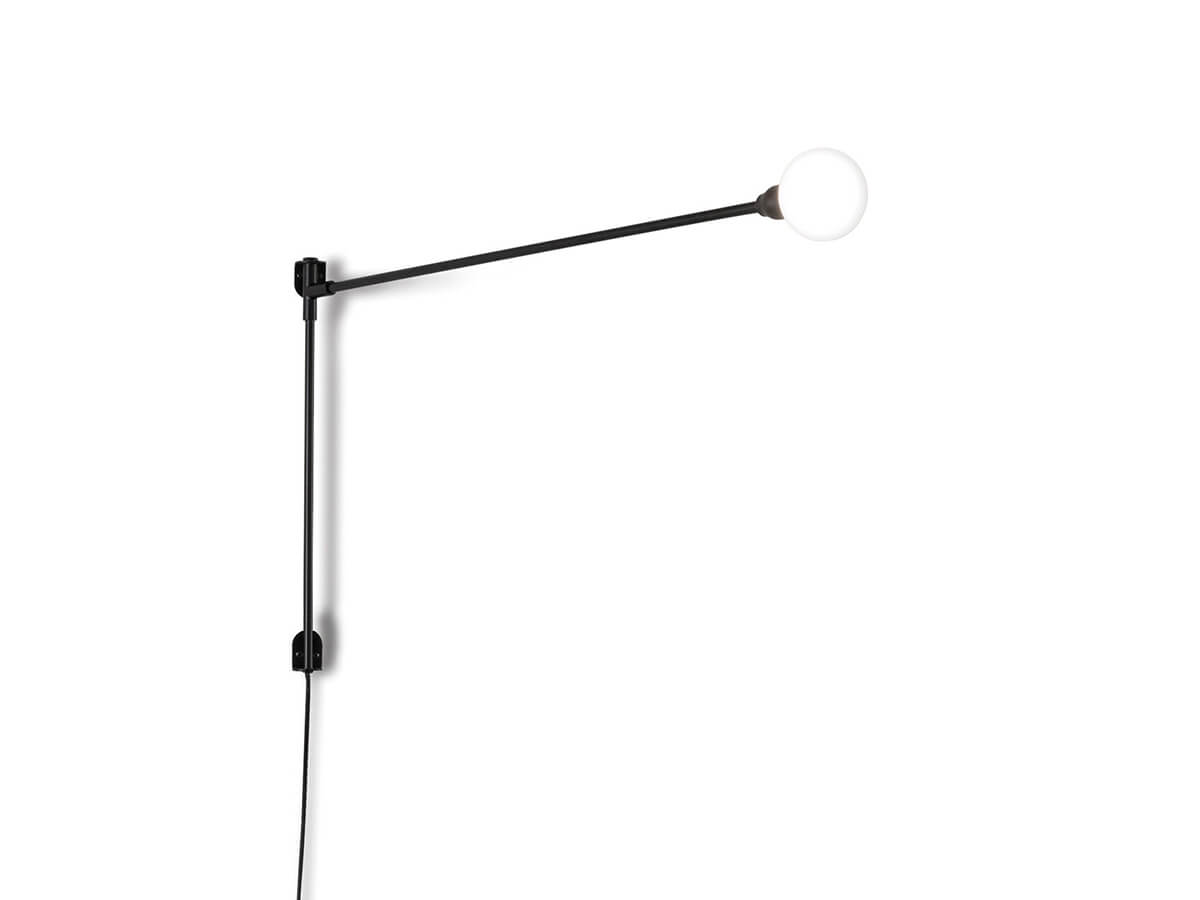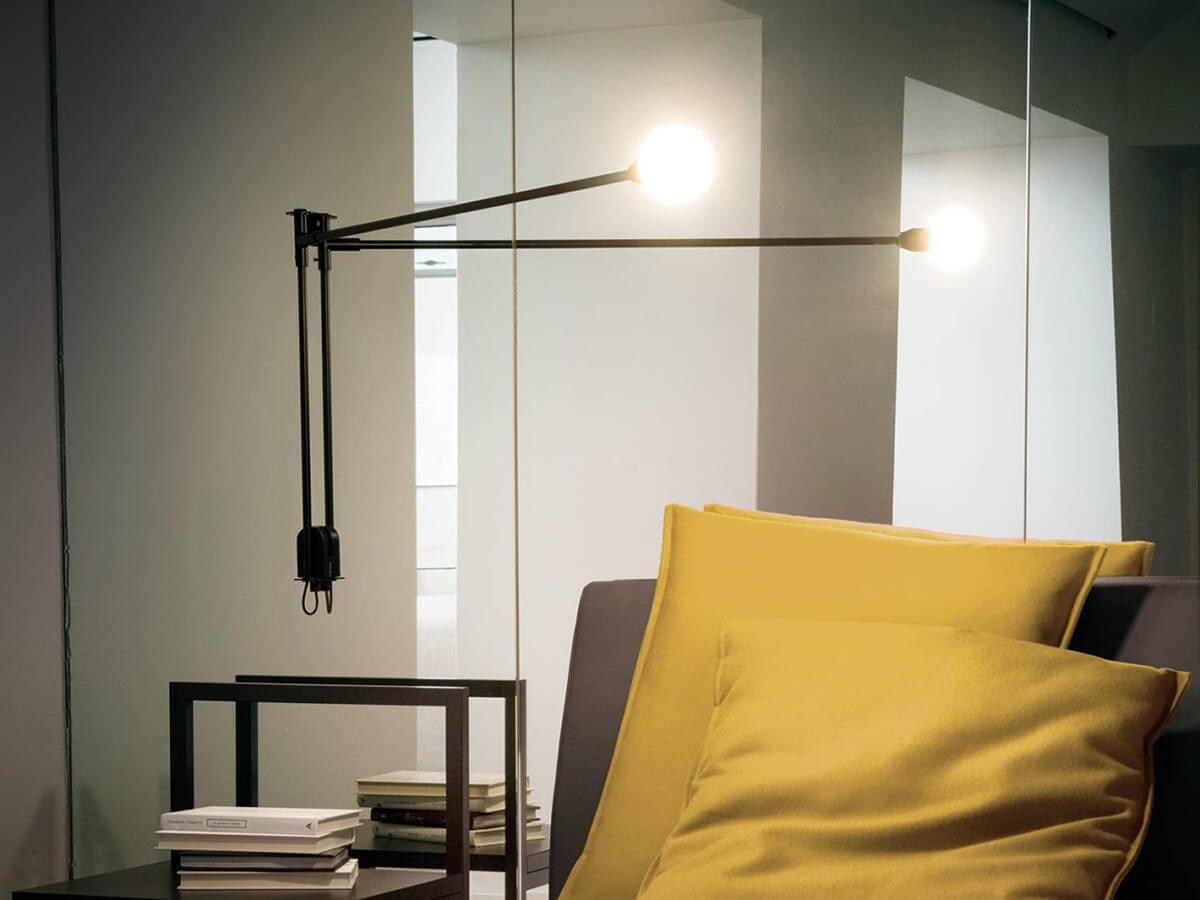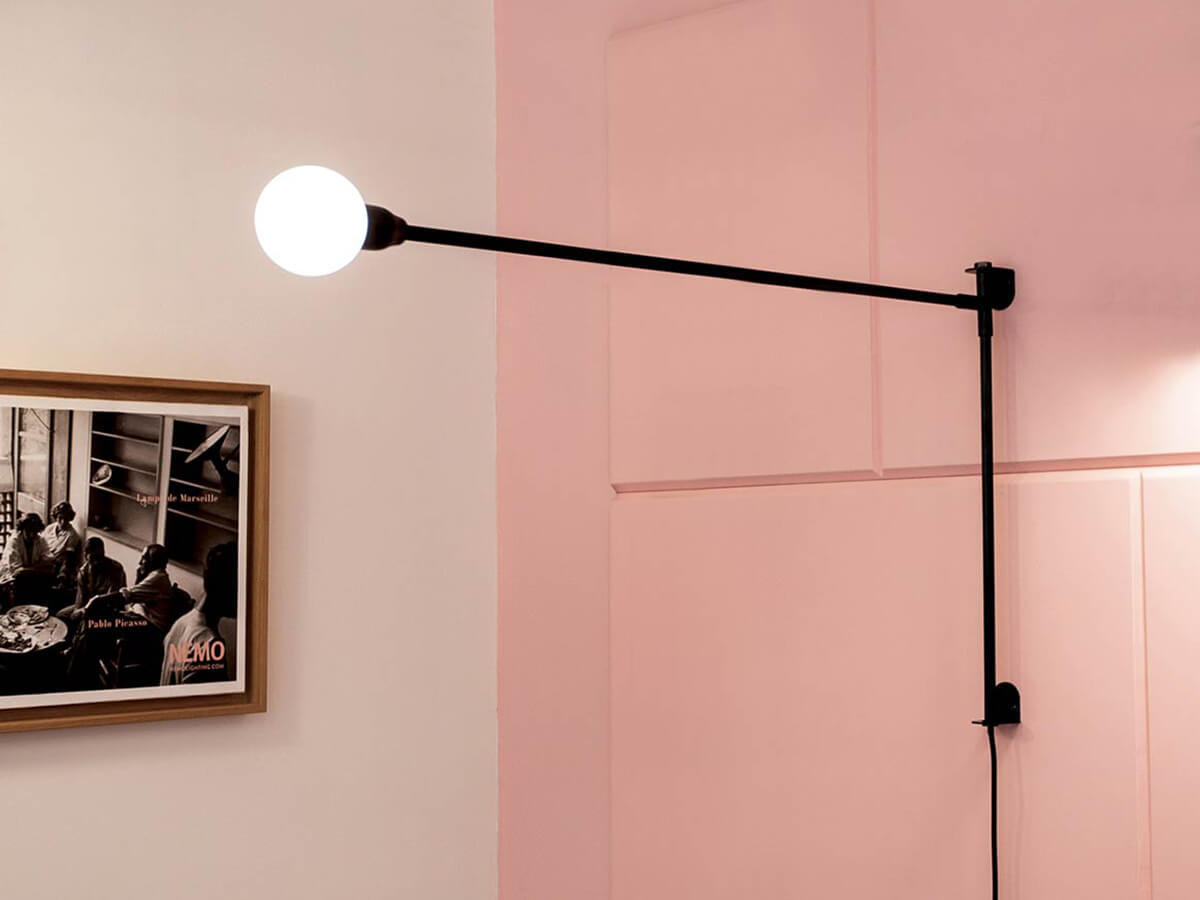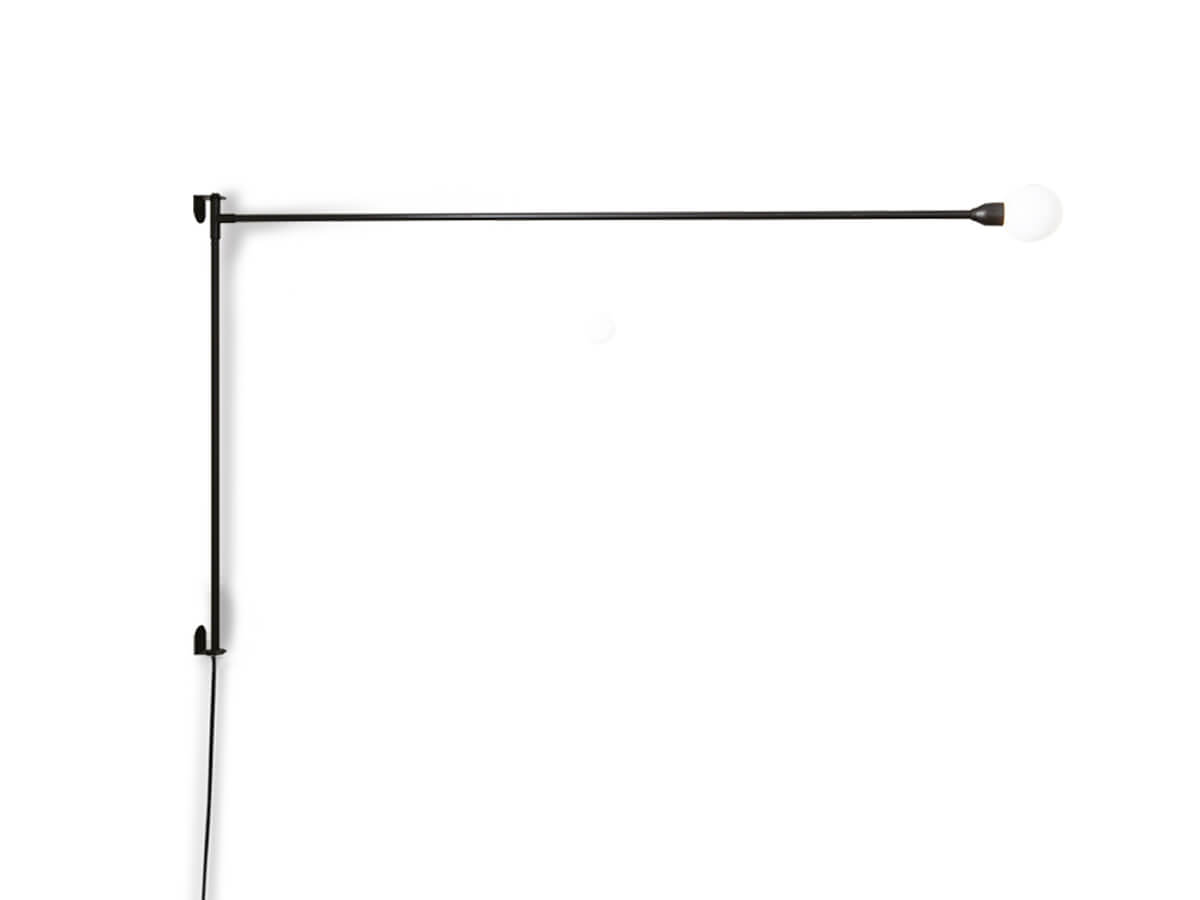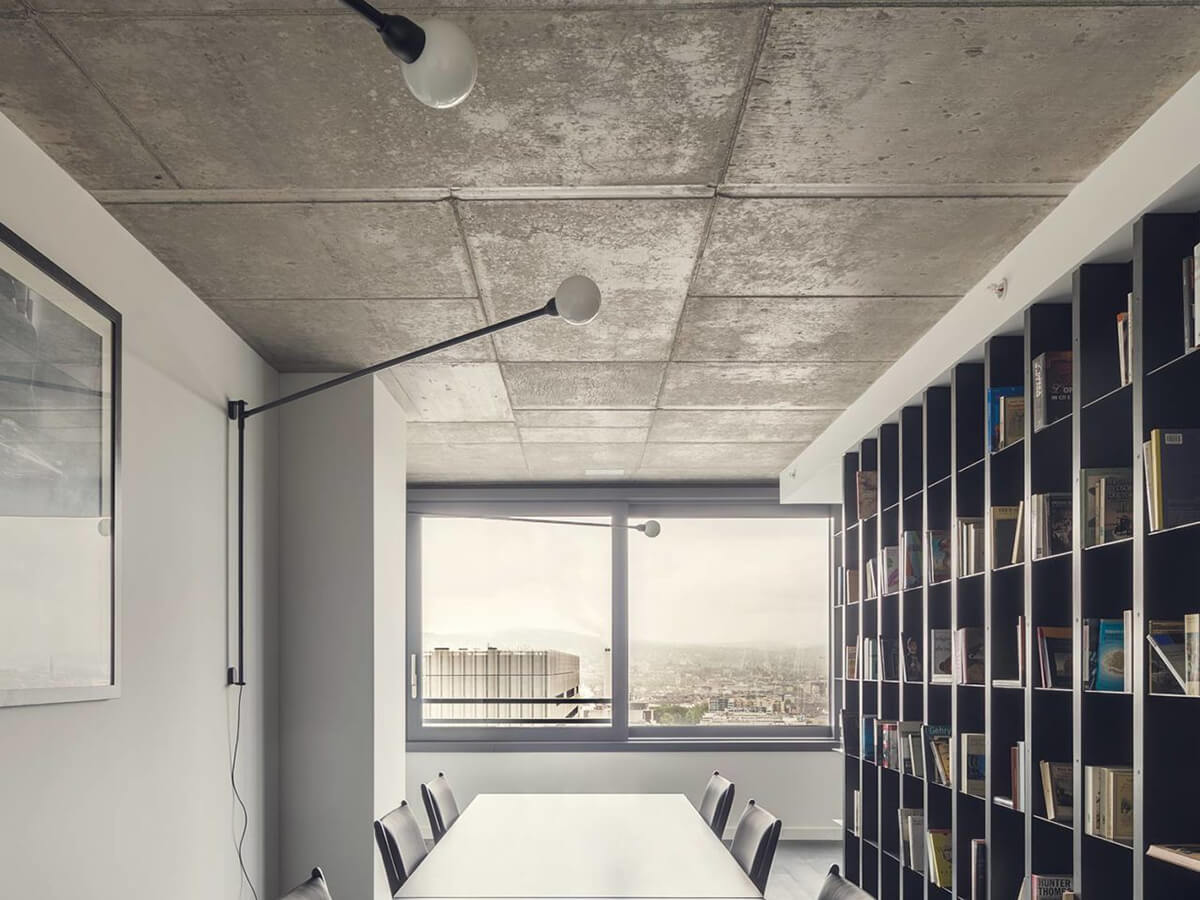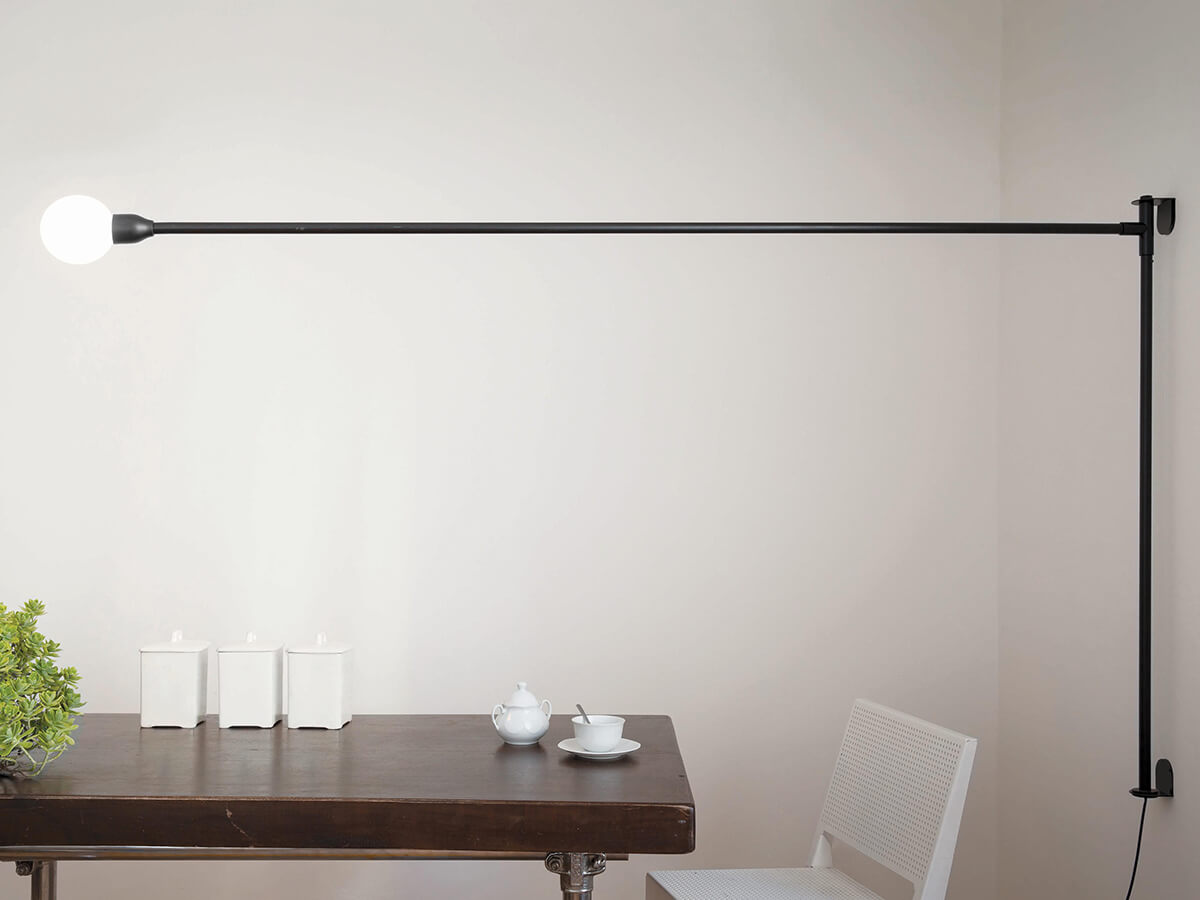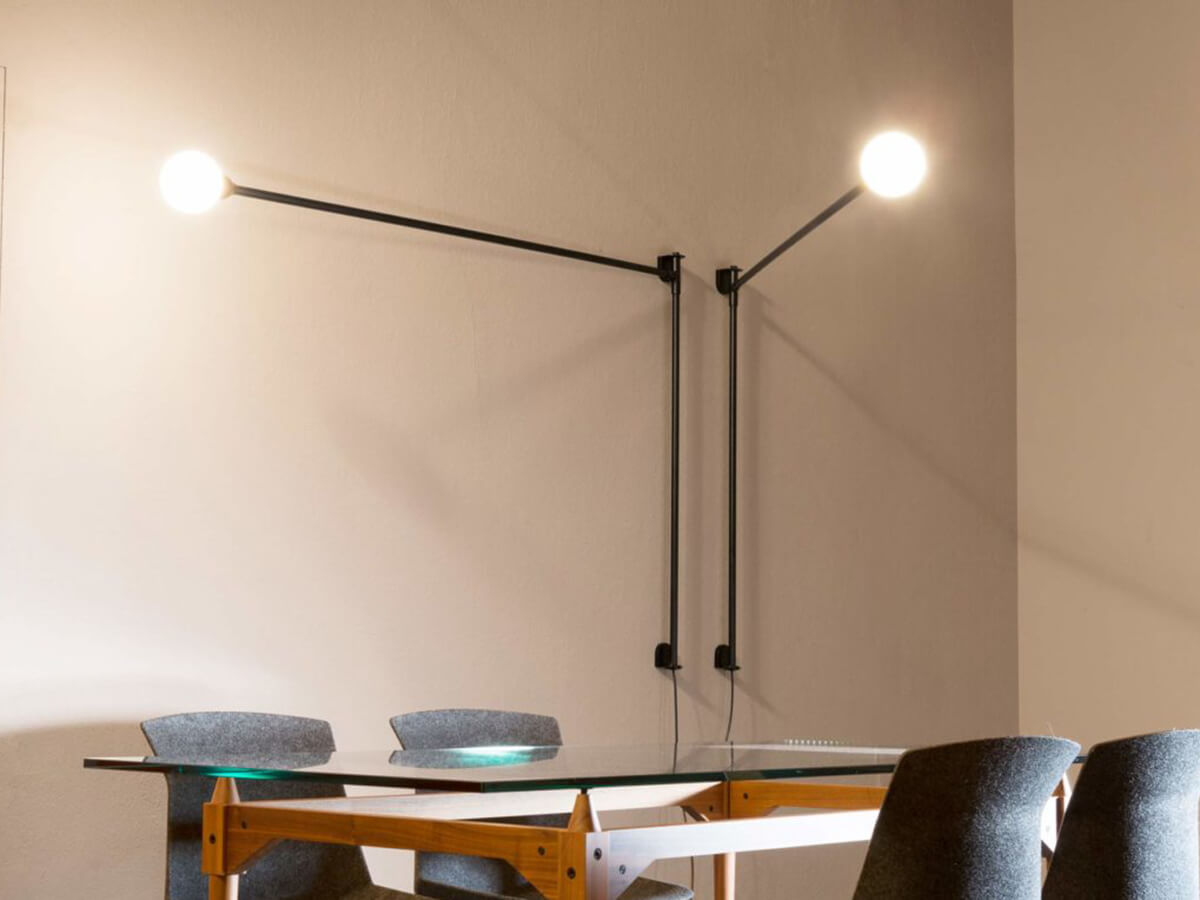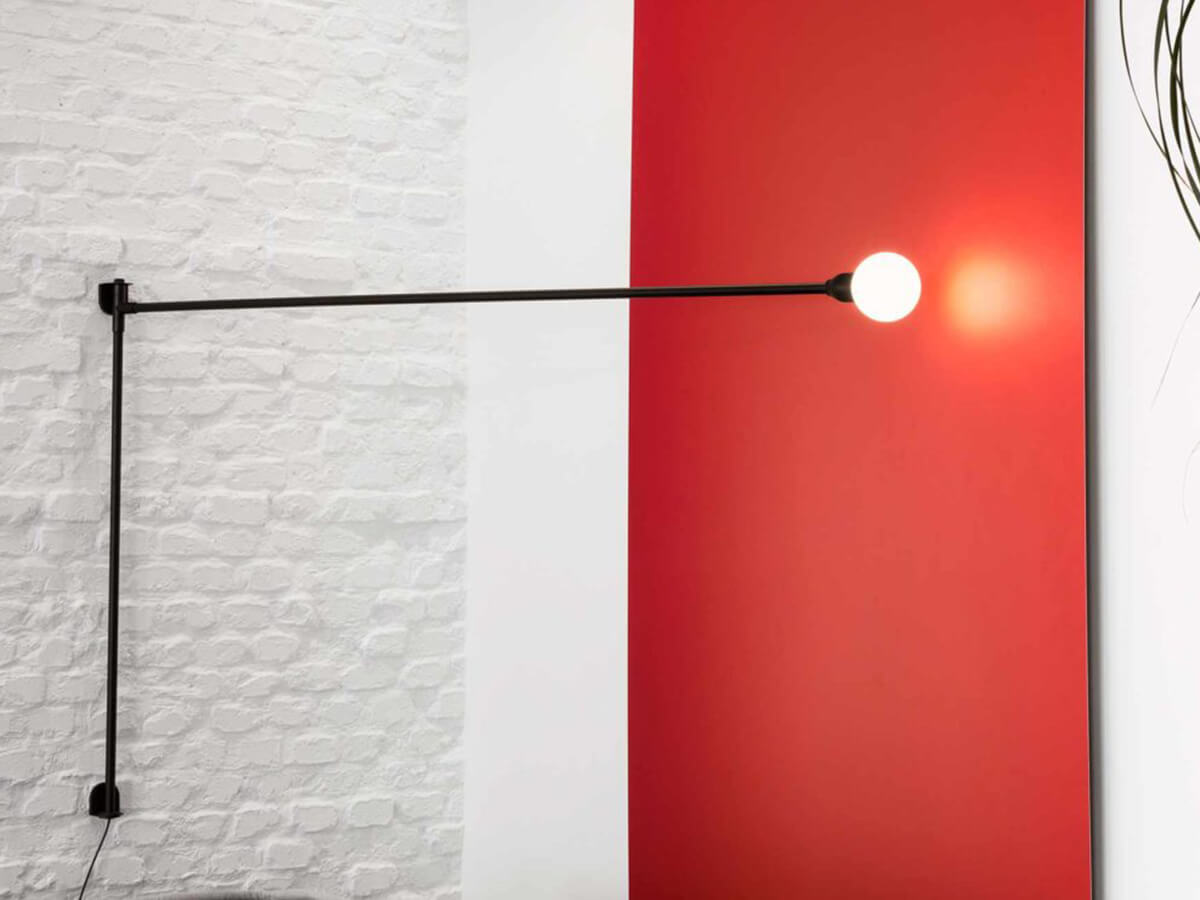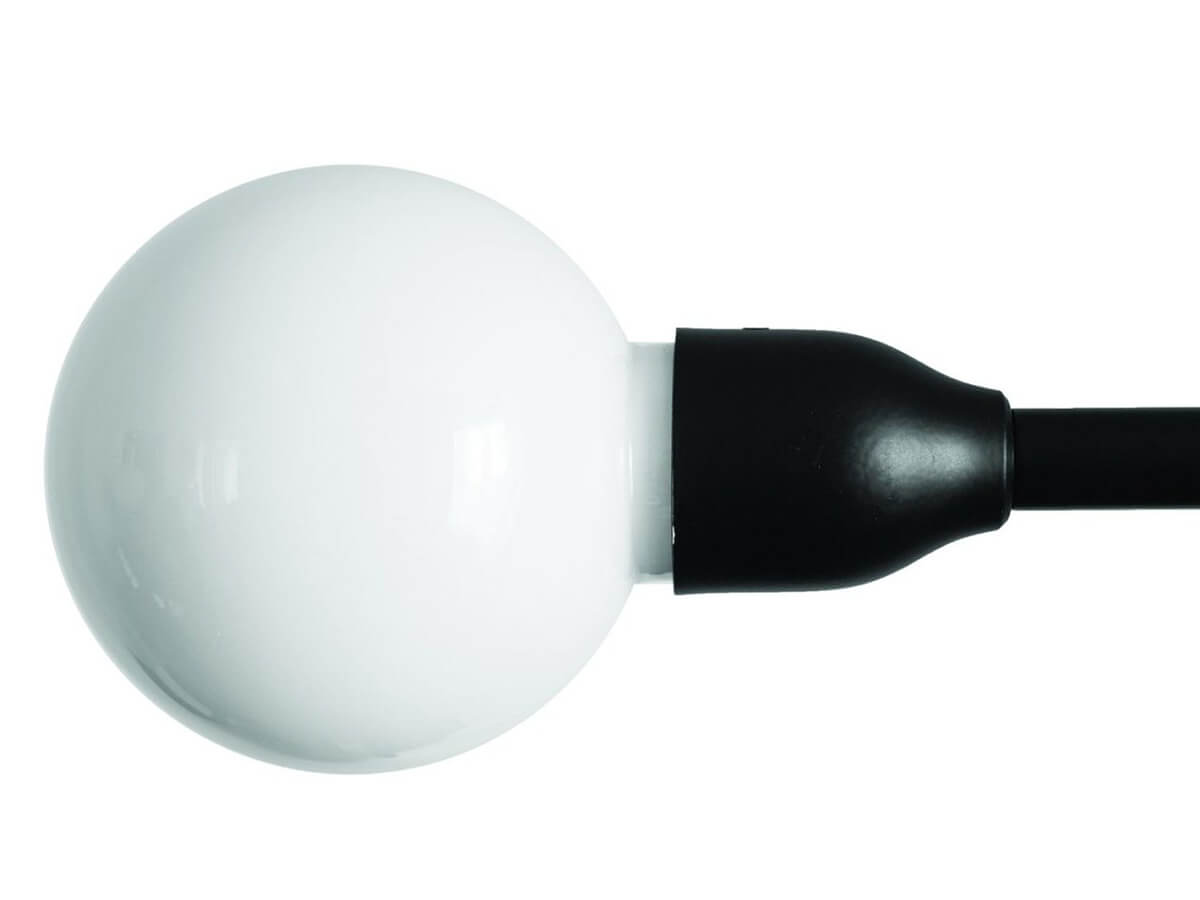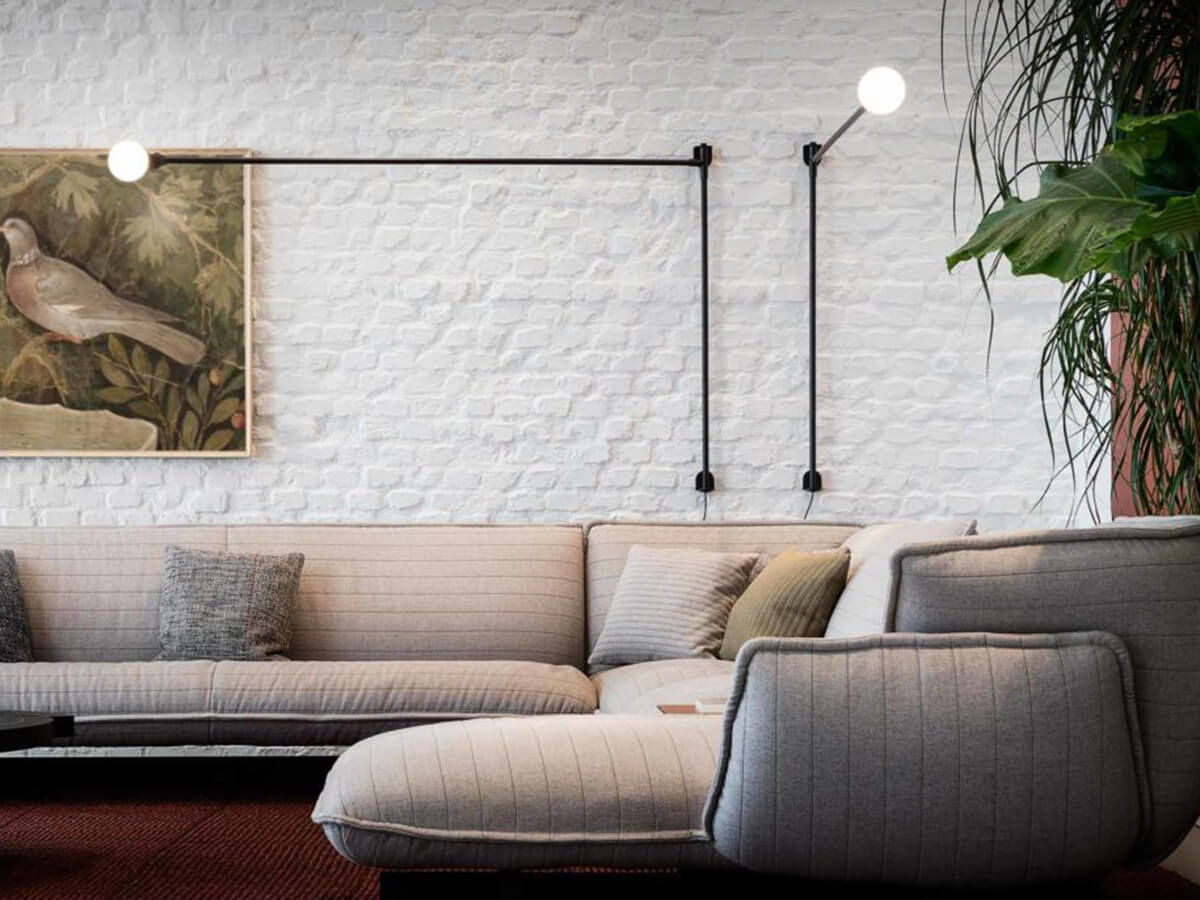Nemo
Potence Pivotante Wall Light
Price starting from € 464,00*
*Price valid for the Mini version in W.100 x H.50 cm in black colour - accessories excluded - bulb excluded (cod. POM HNW 31).
Charlotte Perriand drew inspiration for Nemo's Potence Pivotante wall lamp from the nautical world: in fact, its shape echoes that of the boom, that is, the support beam of the mainsail in the sail of a boat. Potence Pivotante was born in 1938, a period in which Perriand worked closely with the designer Jean Prouvé, who more than ten years later will resume its shapes to give life to his most famous lamp, the Potence, now reissued by Vitra. Minimalist and almost Spartan, Potence Pivotante has the shape of an inverted L, in which one of the arms is fixed along the wall while the other extends into space and can rotate 180 °.
Mini Version in W.100 x H.50 cm
Available also in W.200 x H.104 cm
Salvioni Design Solutions delivers all around the world. The assembly service is also available by our teams of specialized workers.
Each product is tailor-made for the personal taste and indications of the customer in a customized finish and that is why the production time may vary according to the chosen product.
To discover the full range of services available, visit our delivery page.
Personalize your request
Sizes
Select
W.100 x H.50 cm - Mini Version
W.200 x H.104 cm
W.200 x H.104 cm
Select
Select
Thanks to a cunning politic of re-edition of classics of the past and the collaboration with some of the most prestigious designers of the international panorama, Nemo’s light qualifies as a true author’s light. Founded in the 90s by Franco Cassina and Carlo Forcolini to go alongside Cassina’s production with high qualitative level lamps, thanks to its prestigious birthplace the company has been able to benefit from production rights of the illumination projects by some of the greatest masters of the twentieth century, listing in its catalogue names such as Le Corbusier and Franco Albini.Read more
Designed by
Charlotte Perriand
Charlotte Perriand (1903-1999) was one of the most important female figures in the history of twentieth-century architecture and design. She owes the beginnings of her career to Le Corbusier, tutelary deity of the Modern Movement, in whose studio she entered shortly after the end of her studies and with whom she collaborated for ten years, from 1927 to 1937. The two signed some of the most famous furnishings of Modernism, in which they gave full artistic dignity to a material such as tubular steel. She is a strong and independent personality, she gradually began to feel the need for a greater possibility of individual expression, and she began to work on her own, or in collaboration with the equally famous Jean Prouvé. She was very fond of travel and did not set boundaries: she had the opportunity to visit the Soviet Union and Japan, where she spent the entire period of the Second World War. In the postwar period she worked more and more often on her own, softening her lines more and more and moving away from the influence of Modernism. Among her most famous projects, the interior of the United Nations Building in Geneva and the ski resort of Méribel. Her furnishings are all reissued by Cassina.Read more
